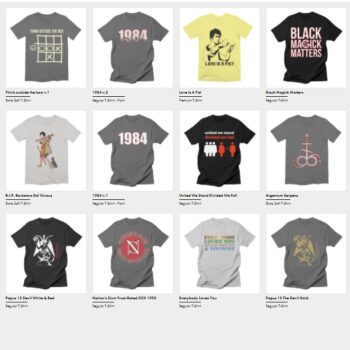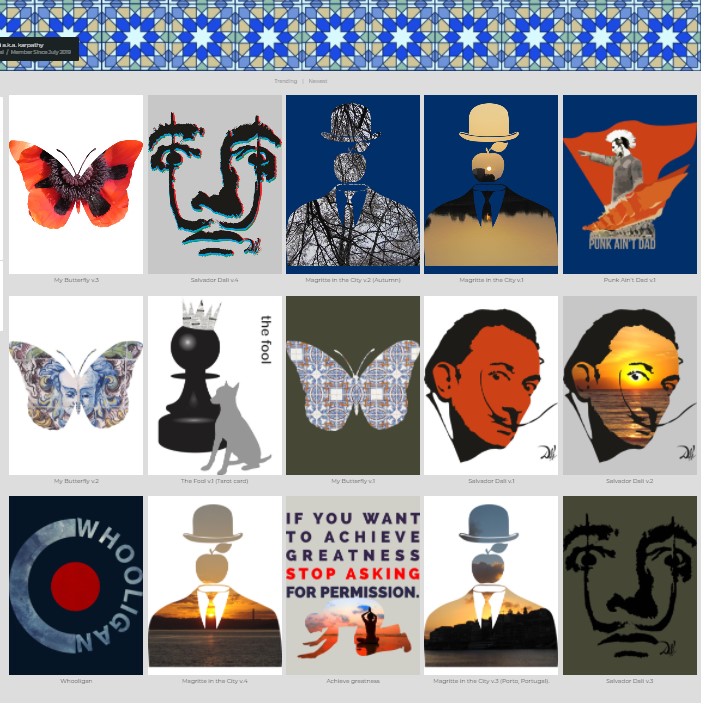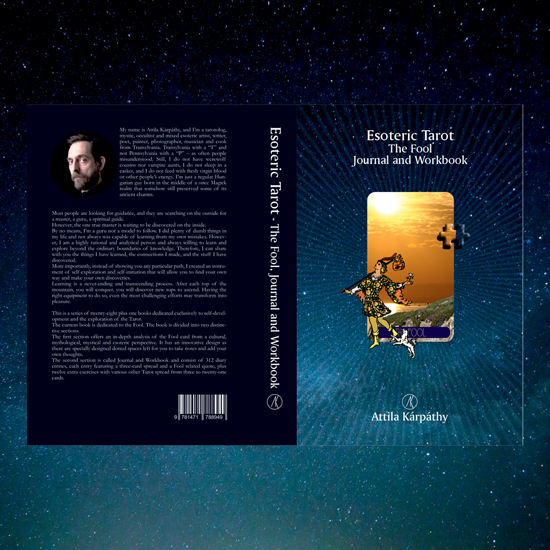[soundcloud url=”http://api.soundcloud.com/tracks/29352012″]
Monthly Archives: November 2011
Make Me A Donut – MMAD, EP (2011)
 This massacre were released from Switzerland and this is a bloody brutal death metal horde which also included in their merciless music modern sounds and some electrifying drum’n’bass/dubstep samples and breaks, hip hop taste-like moments, interludes. It’s a trend right now and those who want to be “up to date” will definitively ride on this dubstep mania, but only a few will actually manage to deliver something worth to mention. MMAD managed to maintain high standards of brutality and they incursions into electronica are only to flavor their murderous riffs, to add aroma to their absolutely aggressive metal. And well, it’s quite convincing, their debut, five track EP shows a determined, surprisingly mature and serious as death metal band. Read more Make Me A Donut – MMAD, EP (2011)
This massacre were released from Switzerland and this is a bloody brutal death metal horde which also included in their merciless music modern sounds and some electrifying drum’n’bass/dubstep samples and breaks, hip hop taste-like moments, interludes. It’s a trend right now and those who want to be “up to date” will definitively ride on this dubstep mania, but only a few will actually manage to deliver something worth to mention. MMAD managed to maintain high standards of brutality and they incursions into electronica are only to flavor their murderous riffs, to add aroma to their absolutely aggressive metal. And well, it’s quite convincing, their debut, five track EP shows a determined, surprisingly mature and serious as death metal band. Read more Make Me A Donut – MMAD, EP (2011)
Korn – The Path Of Totality (2011)
 They previous venture – and first album delivered to Roadrunner Records – issued friendly, achieved unsatisfactory results. Korn became a brand and it seems they get lost rediscovering their past by recycling it more or less inspired. After selling 63,000 copies during its first week in the US, and landing at number two on the Billboard 200, “Korn III: Remember Who You Are” has sold over all only 170,000 units in the US.
They previous venture – and first album delivered to Roadrunner Records – issued friendly, achieved unsatisfactory results. Korn became a brand and it seems they get lost rediscovering their past by recycling it more or less inspired. After selling 63,000 copies during its first week in the US, and landing at number two on the Billboard 200, “Korn III: Remember Who You Are” has sold over all only 170,000 units in the US.
Guitarist James “Munky” Shaffer declared that they’re “definitely moving forward” and mentioned something about a song which reminds him Soundgarden. Than Jonathan Davis released a 14-second sample on SoundCloud in late March, of a new song entitled “Get Up!”, featuring dubstep/electro house artist Skrillex. Dubfuckingwhat?! 😀 Gee! Good that I had wrote about dubstep just a few days back. Still, if you want some quality dubstep, dig out the Brit Subsource – they are just murderous!
But honestly and seriously I doubt it that rockers/metalers will appreciate the latest trend riding from Korn. Read more Korn – The Path Of Totality (2011)
Venom – Fallen Angels (2011)
 “Welcome To Hell”, their 1981’s debut album influenced literally thousands of bands, and while Venom were one of the first incarnations of extreme metal their giving the name of a brand new sub-genre of metal with their 82’s, second album: “Black Metal”. Although lending its name to the latter genre, today the album is often regarded as thrash metal rather than black metal. Venom’s music contributed to shape the style and to the development of many metal bands and numerous bands copying styles, themes and imagery from the band. Although even Metallica had opened for Venom on an early ’80s tour, Venom were regarded by many critics and some metal fans as “a trio of buffoons”, but also they had several conflicts with other musicians. In his Black Flag tour diary, Henry Rollins wrote about a 1986 performance when Black Flag opened for Venom and he mentioned that Venom was hilarious, with mediocre playing. Venom replayed by saying: “his band was useless and that’s why he writes books now”.
“Welcome To Hell”, their 1981’s debut album influenced literally thousands of bands, and while Venom were one of the first incarnations of extreme metal their giving the name of a brand new sub-genre of metal with their 82’s, second album: “Black Metal”. Although lending its name to the latter genre, today the album is often regarded as thrash metal rather than black metal. Venom’s music contributed to shape the style and to the development of many metal bands and numerous bands copying styles, themes and imagery from the band. Although even Metallica had opened for Venom on an early ’80s tour, Venom were regarded by many critics and some metal fans as “a trio of buffoons”, but also they had several conflicts with other musicians. In his Black Flag tour diary, Henry Rollins wrote about a 1986 performance when Black Flag opened for Venom and he mentioned that Venom was hilarious, with mediocre playing. Venom replayed by saying: “his band was useless and that’s why he writes books now”.
As teenager back in the 80’s I was quite fascinated by the epic 20-minute title track of their 1984’s “At War with Satan”, but honestly I never took too seriously their Satanic references. But also I have to admit that I wouldn’t bet back then that in 2011 I will listening – and really like it – a brand new Venom album. Read more Venom – Fallen Angels (2011)
Kill The Noise – Kill Kill Kill (2011)
 Dubstep originated in south London, England, back in 1998 and the earliest releases were darker, more experimental, instrumental dub remixes of 2-step garage tracks attempting to incorporate the funky elements of breakbeat, or the dark elements of drum and bass while the term “dubstep” in reference to a genre of music began to be used by around 2002.
Dubstep originated in south London, England, back in 1998 and the earliest releases were darker, more experimental, instrumental dub remixes of 2-step garage tracks attempting to incorporate the funky elements of breakbeat, or the dark elements of drum and bass while the term “dubstep” in reference to a genre of music began to be used by around 2002.
A very early supporter of the sound was BBC Radio 1 DJ John Peel, who started playing it from 2003 onwards. Throughout 2003, DJ Hatcha pioneered a new direction for dubstep on Rinse FM and through his sets at Forward>>. Playing sets cut to 10″ one-off reggae-style dubplates, he drew exclusively from a pool of new South London producers—first Benga and Skream, then also Digital Mystikz and Loefah—to begin a dark, clipped and minimal new direction in dubstep.
Dubstep started to spread beyond small local scenes in late 2005 and early 2006. In the summer of 2005, Forward>> brought grime DJs to the fore of the line up. Building on the success of Skream’s grimey anthem “Midnight Request Line,” the hype around the DMZ night and support from online forums and the almighty media, the scene gained prominence after former Radio 1 DJ Mary Anne Hobbs gathered top figures from the scene for one show, entitled “Dubstep Warz”, later releasing the compilation album Warrior Dubz. The show created a new global audience for the scene, after years of exclusively UK underground buzz. Read more Kill The Noise – Kill Kill Kill (2011)
Infected Rain – Asylum (2011)
 Imagine a band which have some Pantera-like powerful riffs, plays mainly Korn-like twisted themes and have at the microphone a girl who may howling sometimes, but mainly sings like Amy Lee of Evanescence. But they also use samplers, insert contorted dubstep/drum’n’bass breaks and distorted noises in several songs such as “At The Bottom Of The Bottle”, “Judgemental Trap”, “Unwritten Letter”, etc . Not the usual/conventional metal outfit, but still extremely intense and brutal, Infected Rain build up their own blended style.
Imagine a band which have some Pantera-like powerful riffs, plays mainly Korn-like twisted themes and have at the microphone a girl who may howling sometimes, but mainly sings like Amy Lee of Evanescence. But they also use samplers, insert contorted dubstep/drum’n’bass breaks and distorted noises in several songs such as “At The Bottom Of The Bottle”, “Judgemental Trap”, “Unwritten Letter”, etc . Not the usual/conventional metal outfit, but still extremely intense and brutal, Infected Rain build up their own blended style.
Formed in 2008, in Chisinau, Republic of Moldova – a landlocked state in Eastern Europe, located between Romania and Ukraine eventually knowned for its wine and pretty girls -, they recorded their first demo in the same year and participated in Crimea at the metal festival Red Alert and played several concerts in Moldova and Ukraine. Read more Infected Rain – Asylum (2011)
Black John Wayne – Serenade Of The Black And Blues (2011)
 This might become my favorite metal album of this year. It’s a hell of an album out of the blue. Black John Wayne? Are you kidding me, don’t you? And the answer is, well, no. This is absolutely serious shit. And brilliant. They delivering a killer combination of metal, hardcore and eventually sludge (and even sometimes blues) which sounds like a brutal collision between Slayer, Sick Of It All and Down. This is absolutely deadly! Trust me on this one. It’s been a while since I was excited that much by a metal release, altrough I had listen a lot of interesting products, some of them were quite heavy while others were gloomy and experimental. But this is different: quite groove oriented, full of hardcore energy and armed with cutting edge metal riffs, but also introducing some southern spirit and black musical ingredients (with roots back to blues and gospel), Black John Wayne are both groove and harmony oriented, managed to combine brutality and traditional taste-like musical elements resulting a quite original post-hardcore conglomerate. Read more Black John Wayne – Serenade Of The Black And Blues (2011)
This might become my favorite metal album of this year. It’s a hell of an album out of the blue. Black John Wayne? Are you kidding me, don’t you? And the answer is, well, no. This is absolutely serious shit. And brilliant. They delivering a killer combination of metal, hardcore and eventually sludge (and even sometimes blues) which sounds like a brutal collision between Slayer, Sick Of It All and Down. This is absolutely deadly! Trust me on this one. It’s been a while since I was excited that much by a metal release, altrough I had listen a lot of interesting products, some of them were quite heavy while others were gloomy and experimental. But this is different: quite groove oriented, full of hardcore energy and armed with cutting edge metal riffs, but also introducing some southern spirit and black musical ingredients (with roots back to blues and gospel), Black John Wayne are both groove and harmony oriented, managed to combine brutality and traditional taste-like musical elements resulting a quite original post-hardcore conglomerate. Read more Black John Wayne – Serenade Of The Black And Blues (2011)
Waltari – Covers All! 25th Anniversary Album (2011)
 Known as the crazy metal rockers from Finland, Waltari celebrate 25 years of existence and 20 years from the release of their first album. Frequently combining quite diverse music styles as alternative metal, progressive metal, death metal, hard rock, heavy metal, hip hop, industrial, pop, punk, rap, symphonic metal, techno and thrash metal, most of the band’s music is written by bass player Kärtsy Hatakka, while they lyrics are dealing mainly with personal feelings of anxiety, loneliness and the cruelty of the world, often with heavy irony and sarcasm. They crafted totally new combinations, sounds and approaches, pioneering and assimilating everything that is currently new and becoming a melting pot of musical genres.
Known as the crazy metal rockers from Finland, Waltari celebrate 25 years of existence and 20 years from the release of their first album. Frequently combining quite diverse music styles as alternative metal, progressive metal, death metal, hard rock, heavy metal, hip hop, industrial, pop, punk, rap, symphonic metal, techno and thrash metal, most of the band’s music is written by bass player Kärtsy Hatakka, while they lyrics are dealing mainly with personal feelings of anxiety, loneliness and the cruelty of the world, often with heavy irony and sarcasm. They crafted totally new combinations, sounds and approaches, pioneering and assimilating everything that is currently new and becoming a melting pot of musical genres.
Released 11 studio albums and 3 compilations, “Covers All!” deliver a nice collection of covers from diverse artists such as System Of A Down, Midnight Oil, Anthrax, Iron Maiden, Pink Floyd, Madonna, David Bowie, The Cure, etc Read more Waltari – Covers All! 25th Anniversary Album (2011)
Comity – The Journey Is Over Now (2011)
 This is a hell of a noisy and contorted release, but a quite brilliant, terrifying and hypnotizing one. And once again, Throatruiner Records give away the digital version for free, “name your price” and download/eventually buy the album or use the direct link from Mediafire – everything is there on the label’s Bandcamp page. We all love the free stuffs, but still, artists are also humans and have to fill up their refrigerators, have to pay their debts, rents and utilities, isn’t it? Not to mention the costs of playing music. And well, never thought about, don’t you? – running a record label, helping bands to go on and eventually break through might be done with love and passion, but still, it’s also a quite honorable job and it must be paid too. As I said before and I will keep on telling this: if we do not support the underground it will disappear eventually and we will be left exclusively with the so-called mainstream s*it delivered by the global corporations.
This is a hell of a noisy and contorted release, but a quite brilliant, terrifying and hypnotizing one. And once again, Throatruiner Records give away the digital version for free, “name your price” and download/eventually buy the album or use the direct link from Mediafire – everything is there on the label’s Bandcamp page. We all love the free stuffs, but still, artists are also humans and have to fill up their refrigerators, have to pay their debts, rents and utilities, isn’t it? Not to mention the costs of playing music. And well, never thought about, don’t you? – running a record label, helping bands to go on and eventually break through might be done with love and passion, but still, it’s also a quite honorable job and it must be paid too. As I said before and I will keep on telling this: if we do not support the underground it will disappear eventually and we will be left exclusively with the so-called mainstream s*it delivered by the global corporations.
Throatruiner Records and other indie/DIY underground labels bring to the surface exciting and excellent bands as Comity are. Listen “The Journey Is Over Now” and buy the vinyl, nothing sounds like an authentic record spinning on your pick-up. Read more Comity – The Journey Is Over Now (2011)
Balanescu Quartet – This Is The Balanescu Quartet (2011)
 Actually this is a kind of “Best Of” – to avoid the even further disagreeable term of “Greatest Hits” – while the music is absolutely valuable, and this is a proper opportunity to bring to the attention the Balanescu Quartet for those who do not know them yet.
Actually this is a kind of “Best Of” – to avoid the even further disagreeable term of “Greatest Hits” – while the music is absolutely valuable, and this is a proper opportunity to bring to the attention the Balanescu Quartet for those who do not know them yet.
Alexander Balanescu in 1979 became leader of the Mychael Nyman Ensemble and toured with the group for 15 years. During the same period he also was member of the Gavin Bryars Ensemble. After another 4 years of work left the Arditti Quartet in 1987 to form his own quartet – the Balanescu Quartet. Along the way collaborators have included Michael Nyman, Gavin Bryars, Ornette Coleman, Peter Greenaway, David Byrne, the Pet Shop Boys, Spiritualized, Kate Bush and Kraftwerk, and they has gone on to acquire a reputation as one of the world’s leading contemporary music groups.
The Balanescu Quartet rose to fame through the release of several complex re-interpretations of songs by Kraftwerk and collaborations with Michael Nyman, David Byrne and Goldfrapp amongs others. Well, the Balanescu Quartet are not an average string quartet as we get used to. But this is definitively 55 minutes of excitement and joy. Read more Balanescu Quartet – This Is The Balanescu Quartet (2011)






